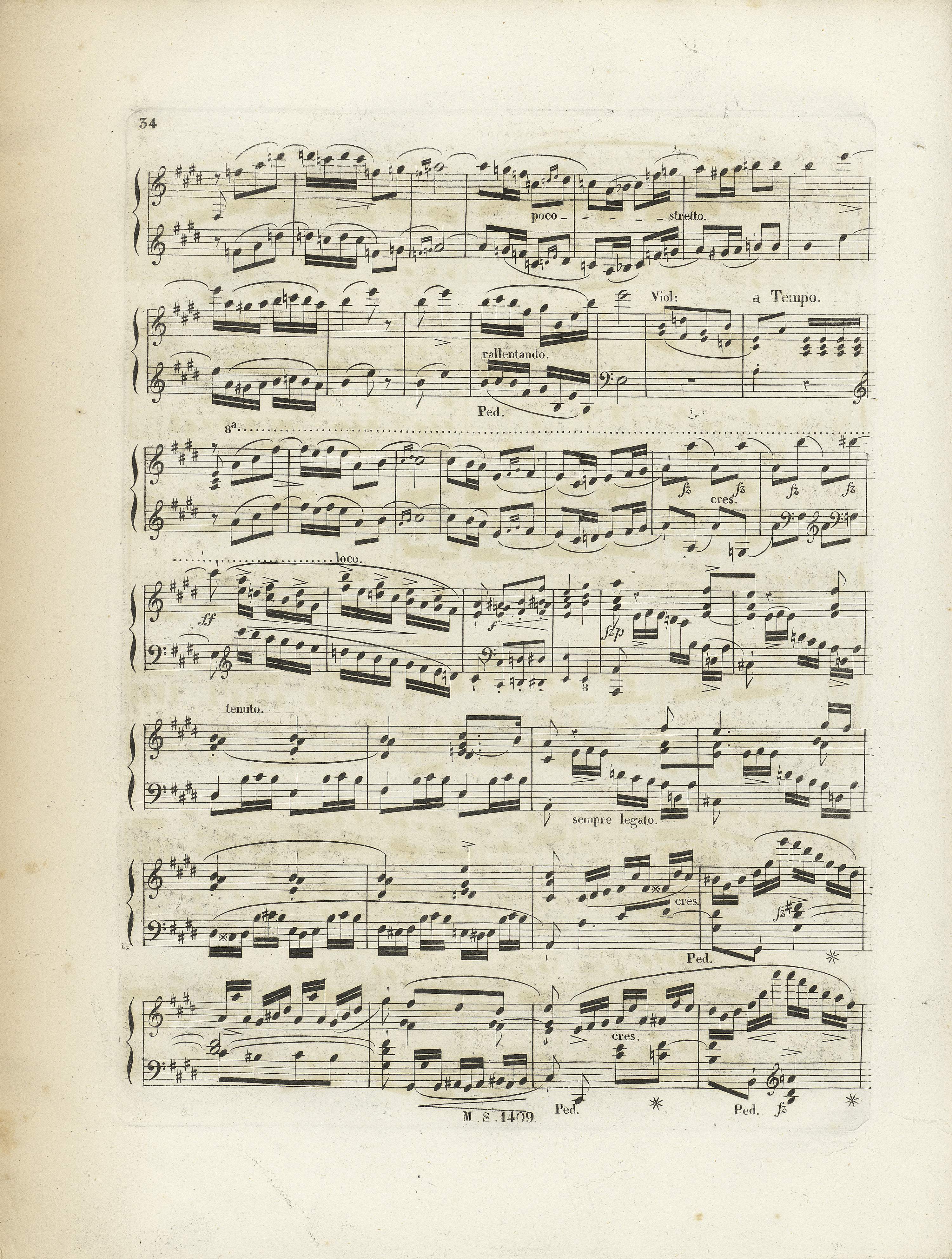



The crossing-out of the tied g 1 note at the beginning of the bar visible in FEH may indicate a variant – cf. analogous bar 228. It was probably meant to simplify the performance, since omission of the tie, sonically practically unnoticeable, enables the f
1 note at the beginning of the bar visible in FEH may indicate a variant – cf. analogous bar 228. It was probably meant to simplify the performance, since omission of the tie, sonically practically unnoticeable, enables the f 1-g
1-g 1 second to be performed with the 1st finger, which, in turn, allows for an easier fingering of the upper voice. However, it cannot be excluded that the crossing-out was only supposed to suggestively signalise that this note should not be played simultaneously with the e1-e2 octave, which is indicated by a few similar crossings-out – see bars 294-295 as well as 334-335, 370-371, 377-378.
1 second to be performed with the 1st finger, which, in turn, allows for an easier fingering of the upper voice. However, it cannot be excluded that the crossing-out was only supposed to suggestively signalise that this note should not be played simultaneously with the e1-e2 octave, which is indicated by a few similar crossings-out – see bars 294-295 as well as 334-335, 370-371, 377-378.
Compare the passage in the sources »
category imprint: Differences between sources
issues: Annotations in teaching copies, Authentic post-publication changes and variants, Annotations in FEH
notation: Rhythm



